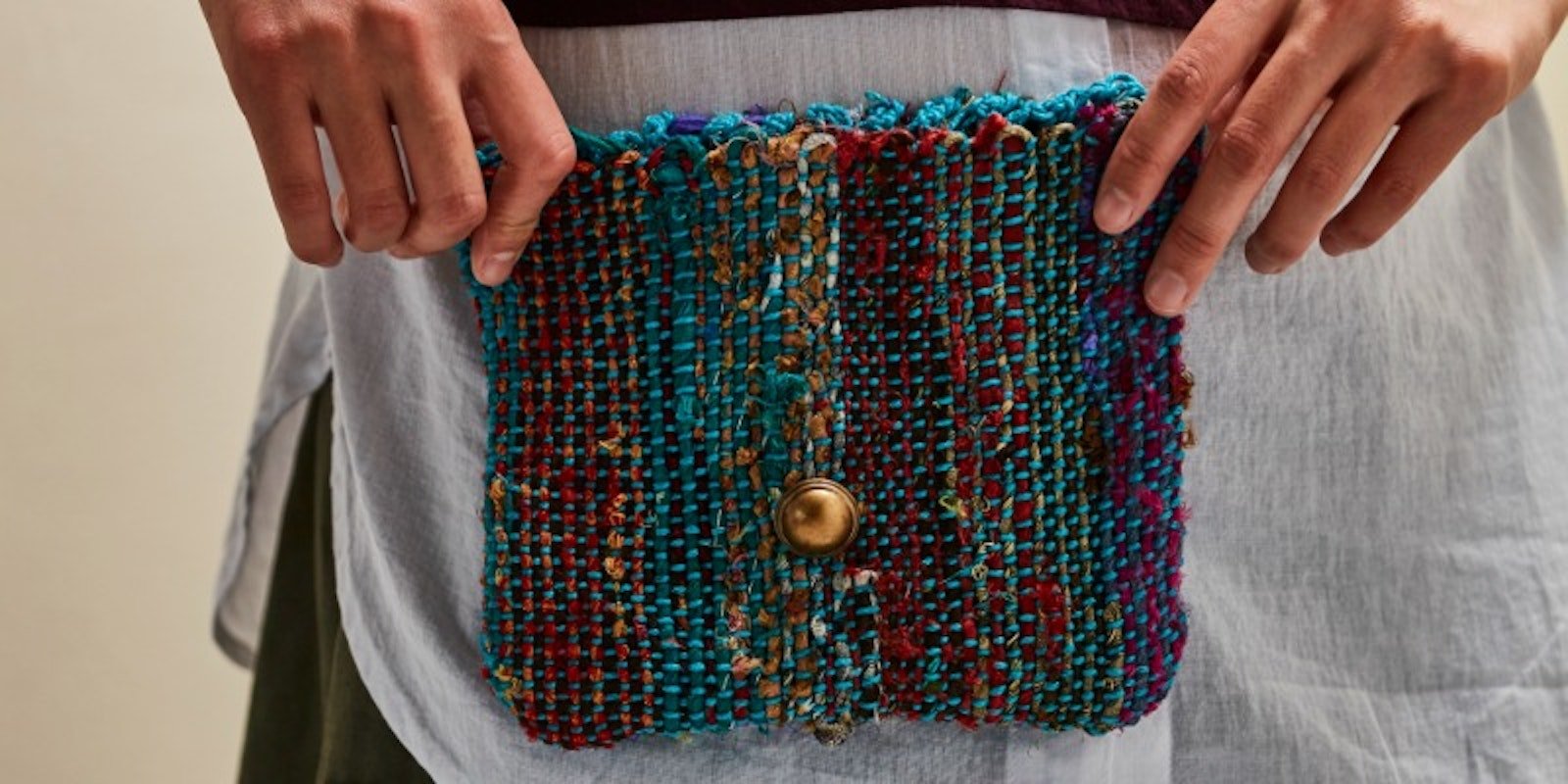Traditional Indian saris are the kinds of garments that capture the imagination. While they’re fairly simple in theory—just long rectangles of fabric—they’re often woven out of brightly colored fine silks in intricate designs, and one sari can be styled in dozens of ways for different effects. Best of all for weavers, old saris make excellent yarn.
When saris get stained or worn out, they are often traded for cooking utensils sold, and recycled into new accessories and clothing, and more and more of these recycled saris are finding their way into the hands of weavers. Take the gorgeous recycled sari silk yarns offered by Treenway Silks. The first time I saw these yarns I fell head over heels in love with them. They’re bright, beautiful, and made from scrumptious silk—what’s not to love?
Jewel Bag by Whitney Dorband from Easy Weaving with Little Looms 2018.
The recycled sari silk makes a delightful weft yarn. Handspun in India from sari silk fibers, the yarn’s jewel tones twist onto one another throughout to create stunning color combinations, and little bits of the fiber stick out to give the yarn a one-of-a-kind texture. In her Jewel Bag project for the 2018 issue of Easy Weaving with Little Looms, weaver Whitney Dorband paired this yarn with bright blue Jorie II silk from Treenway. The resulting clutch is gorgeous. The Jorie II is a thin enough warp to let the sari silk yarn shine through, so you can really see the beautiful color changes and the unique texture of the handspun silk.
A bit of macramé at the end gives the purse a bit of extra flair, although simply weaving a longer piece of fabric and using that as the flap would be lovely as well. The macramé might make the bag appear delicate, but it’s actually quite sturdy and will hold up to plenty of use. Add a strap—I think a kumihimo braid using the Jorie II would look fabulous—and you’ve got yourself a perfect little bag for daily use. Not a fan of blue? Treenway offers a dyeing service with over 100 different colors, so you can choose the perfect color for your project.
Beverly Weaver’s Hit and Miss Runner from the January/February 2014 issue of Handwoven uses Treenway Silks’s recycled sari ribbon as weft.
Treenway also carries a fabulous sari silk ribbon yarn that is made of strips of saris sewn together. Each put-up is a unique rainbow of sari silks. Treated like a rag yarn, the sari silk ribbon makes for some spectacular weaving. In the January/February 2014 Handwoven, Beverly Weaver used it to create her show-stopping “Hit and Miss Runner,” and I imagine it would make beautiful placemats, pillow covers, or fabric for a vest or jacket.
My favorite part about Treenway Silks’s line of recycled sari silk yarns, though, is that they all come from a women’s co-op in India. Along with keeping old saris out of landfills, the purchase of these yarns (and fibers and strips) provides employment and fair wages. How great is that?
So there you have it: saris are completely magical garments. They start out life as 9 or so yards of fabric that can be wrapped and draped in dozens of ways and then, when they’re worn out, they’re recycled into yarn that can be turned into something new and equally wonderful.
Happy Weaving, Christina
This post is sponsored by Treenway Silks.



